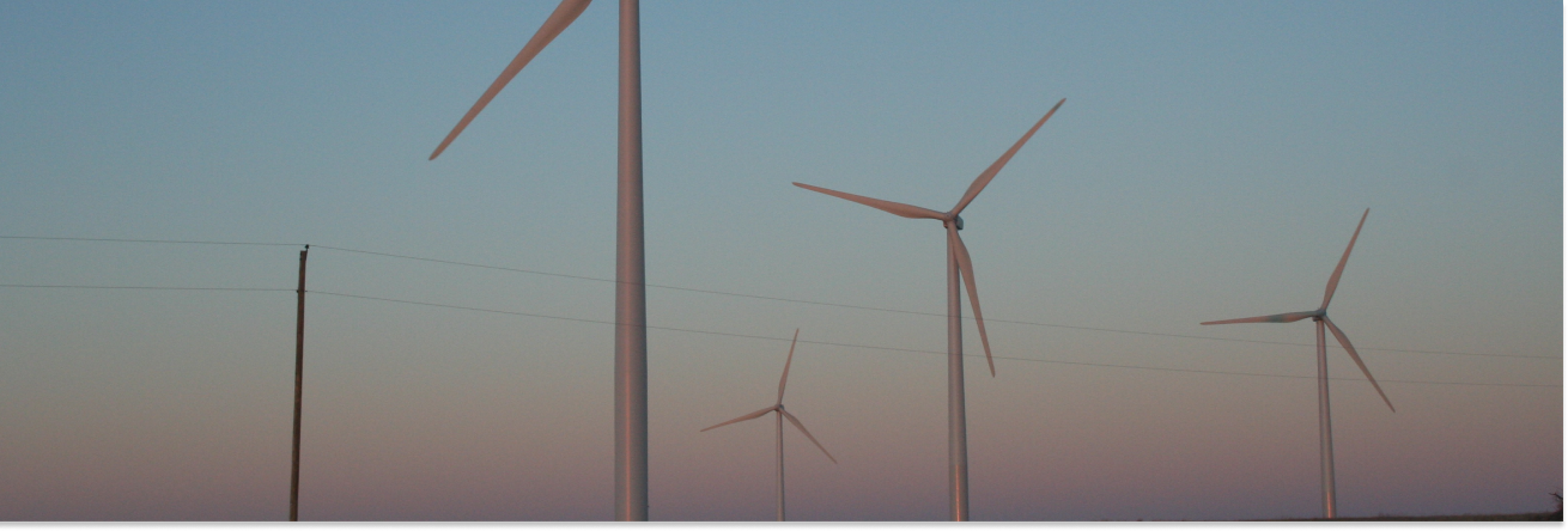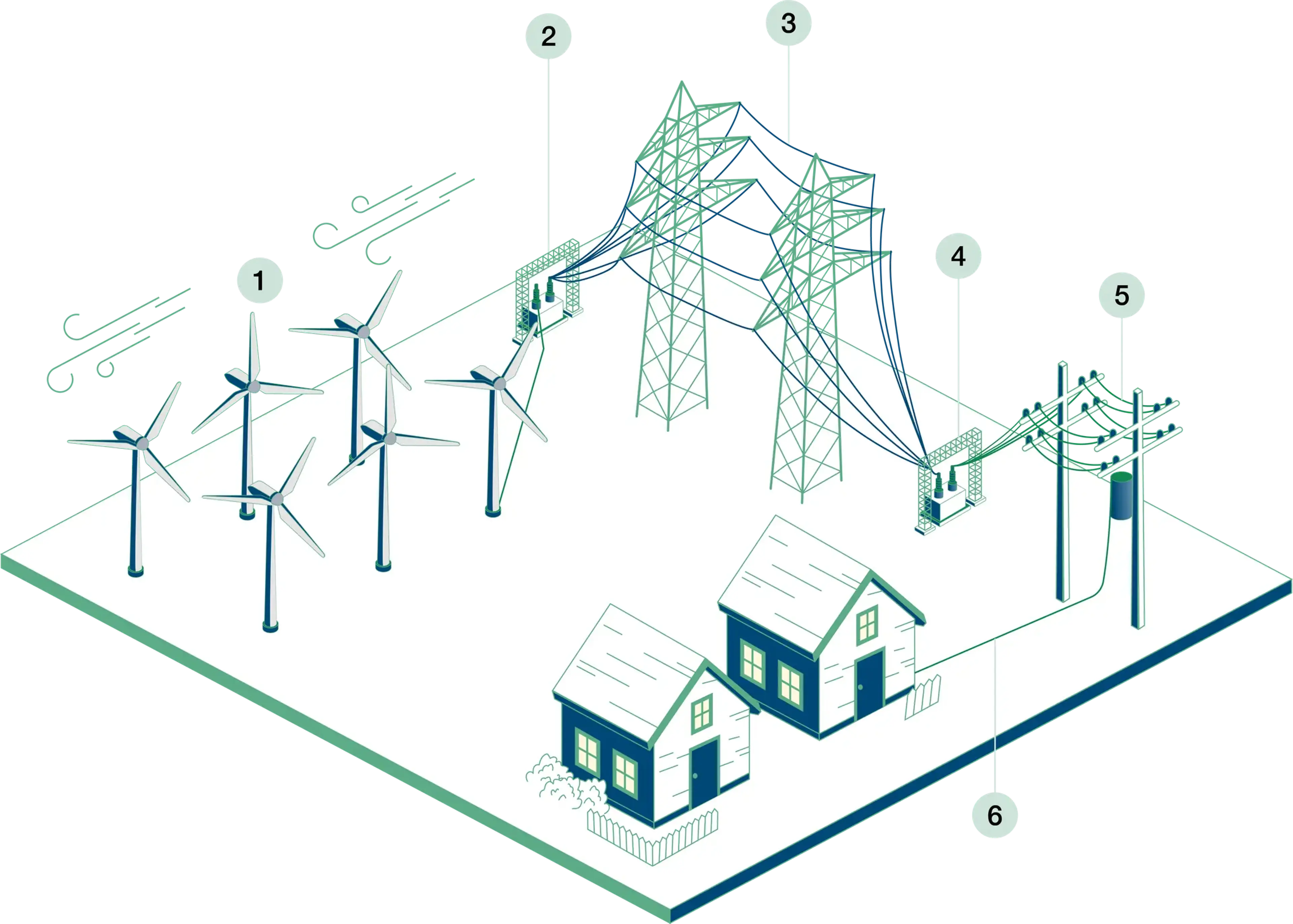
What you should know about wind energy
What you should know about wind energy
Land-based wind energy is currently the largest source of clean power generation in the United States. Our wind projects help generate economic stability through local business-sustaining job creation, landowner payments and tax revenues, all while producing cleaner, more reliable and affordable homegrown energy.
How Wind Energy Works
- 1 Turbines spin to generate electricity. Turbines can adjust depending on wind direction.
- 2 Transformer increases voltage of electricity.
- 3 Electricity travels through transmission lines.
- 4 Transformer decreases voltage of electricity.
- 5 Electricity travels through collection lines.
- 6 Electricity is delivered to customers.

Benefits of Wind Energy
Wind powers communities with a limitless, free and non-polluting renewable energy resource that consumes virtually no water. Learn more about the benefits of wind energy.
Community Investment
Protecting Family Farmland
Compatibility with Farming
Job Creation
Supports Energy Independence
Abundance of Wind Resource
Emission-Free Energy
Public Health Benefits
Conserving Water Resources
Wind in New York
New York State has set ambitious targets to generate up to 70% of its electricity from renewable sources and to reduce greenhouse gas emissions by 40% by 2030. Wind energy is an essential component to meet these goals. According to the U.S. Energy Information Administration, as of October 2024 there were over 2,900 megawatts of wind capacity at 35 projects across the state. Statewide, the clean energy industry employs over 18,000 New Yorkers and invests over $33 million into New York communities every year.
Learn more

Explore Invenergy's wind portfolio
Invenergy has developed more than 19 gigawatts of wind energy across more than 120 projects, enough to power 5 million homes. Find out more about our successful track record in wind energy.

